Luckily – largely thanks to the Facebook Messenger platform – many charities are starting to realise that chatbots can be a simple, straightforward, and highly effective tool for online engagement.
So, just how are charities using chatbots, and what can they achieve? Here are a few of the best examples.
Mencap
Unlike most brand examples which live on Facebook Messenger, the Mencap chatbot lives on the charity’s own website.
Part of the ‘Here I Am’ campaign, it is designed to help people discover more about learning disabilities, and more specifically, to help break down stereotypes and any mis-informed assumptions.
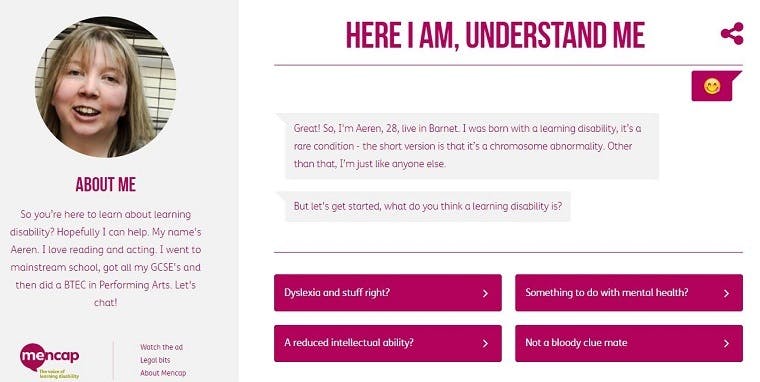
There’s no NLP (natural learning processing) involved, as the chatbot merely gives the user a set of pre-chosen responses (a decision tree). However, I was pleasantly surprised by the amount of humour involved, with the bot’s tone of voice portraying a very human and endearing personality.
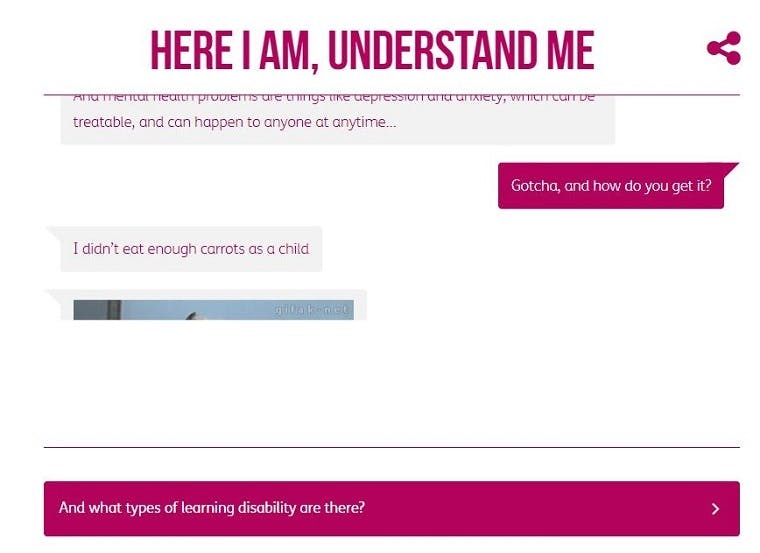
According to Mencap, the amount of people to use the chatbot remains fairly low, however engagement levels are typically high. It is also said to have led to a 3% increase in awareness for the charity overall – and succeeded in its core aim of educating users.
WaterAid
While most chatbots provide users with basic information, WaterAid’s example uses storytelling to offer a more immersive experience. It connects users with Sellu – a farmer, fisherman, and father of three from Sierra Leone – and gives them an insight into his world and the work that WaterAid does to help.
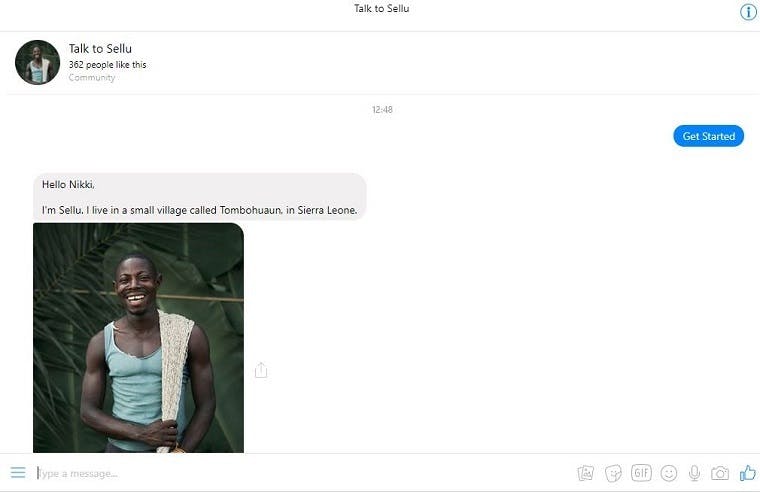
The chatbot is one of the most content-heavy I’ve come across, integrating video, photos, and a whole host of interactive questions to guide users along the way.
From how Sellu makes money to what his family typically eats – there’s a lot of information included, which means it’s very easy to stay engaged and immersed in the chatbot.
It might not necessarily be so effective for acquiring new donators (unless a user is already interested in the idea) – but the chatbot certainly succeeds in connecting existing supporters to the people they’re helping. In this sense, it could help strengthen connections to the charity, and lead to repeat donations in future.
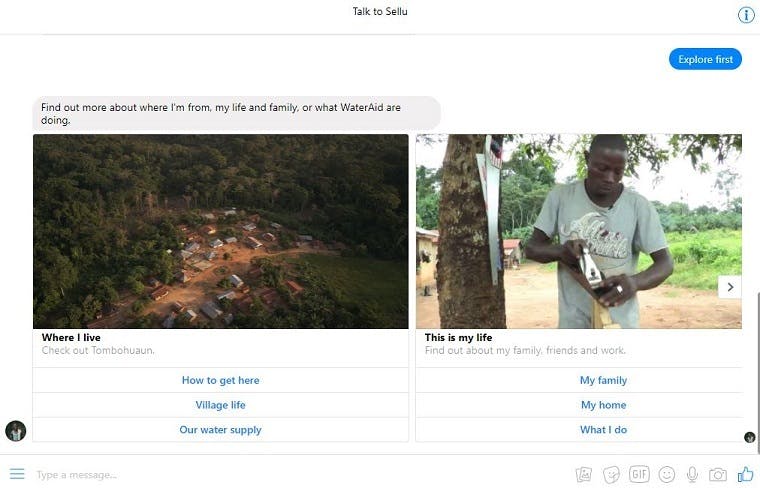
Shelter Scotland
In contrast to charity chatbots that are created to raise awareness or increase engagement, Shelter Scotland created one to serve a much more direct purpose.
Prior to the project, the charity identified a few key problems with its customer service. These included the fact that 50% of calls to Shelter weren’t getting through, the website content was proving tricky to navigate, and 4,000 live chat sessions had been conducted that year.
The launch of a chatbot would theoretically take away these issues, helping to streamline service and take away strain on staff.
The end result was a bot named Sheldon, who responds to queries about people’s rights as a private tenant. As well as offering help and advice, the bot also allows Shelter to collect helpful data which can then be used if the person goes on to make further queries.
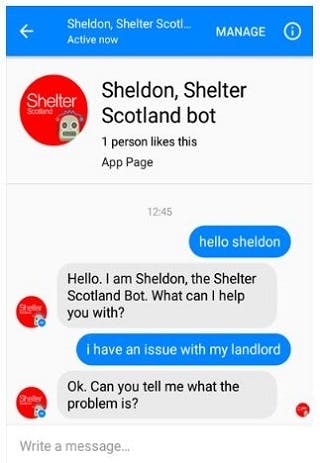
As well as providing real value for users, the bot is a great example of how the technology can be used to make internal processes much more efficient.
Update 19 Feb: Shelter Scotland got in touch shortly after this article was published to let us know that the Sheldon prototype was actually a concept developed at a hackathon, and the idea itself wasn’t taken beyond the working concept stage or fully implemented.
However, the charity has now implemented the Ask Ailsa chatbot on its website, developed to coincide with changes to legislation around private renting, and to answer questions specifically on this subject.
The chatbot is undergoing further development to increase the number of enquiries it is able to respond to, and to implement natural language processing.
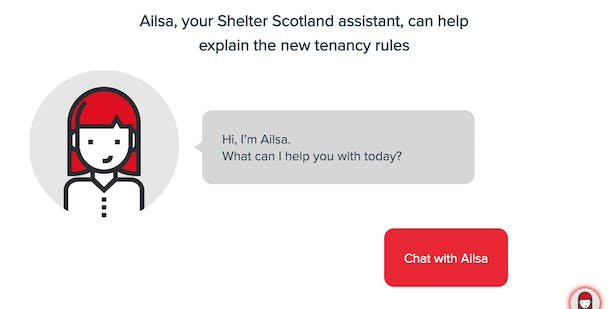
charity: water
I debated whether or not to include charity: water’s chatbot into this list, as it’s among the most very basic of bots I’ve used. However, there’s no denying its functionality, which means it’s surely a good example of a charity utilising the technology for a core aim – to raise money.
Essentially, the Messenger chatbot is a vehicle for donations, simply asking users to send either $30 or $60 – which it then processes via the payment provider Stripe.
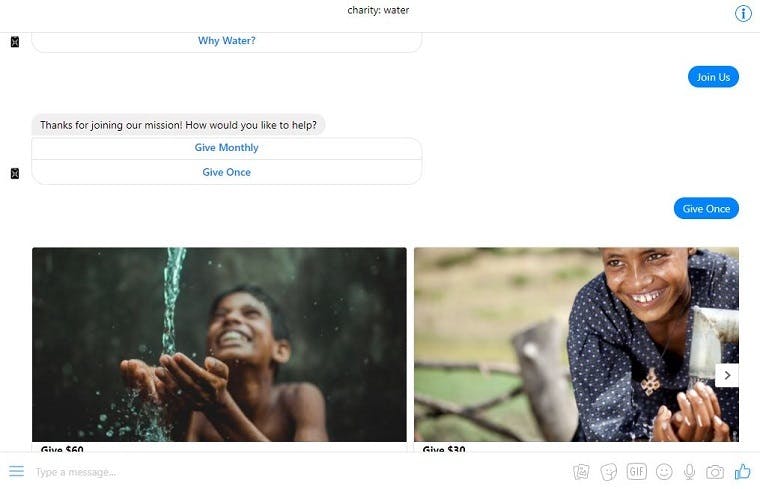
There’s no bells or whistles, however, it’s clearly a way of adapting to the social experience – i.e. moving away from external donation journeys to a platform that a younger, tech-savvy audience is most likely to use.
Akancha Against Harassment
Akancha Against Harassment is an Indian charity that works to raise awareness against cyber harassment. Recently, it launched a chatbot on its website that aims to both inform users and help them in moments of need.
Available 24/7, it provides users with a range of categories to choose from, including registering a complaint, finding out about workshops and events, or what to do if they’re feeling harassed. Then, it provides them with the relevant resources in order to prompt action and prevent further problems.
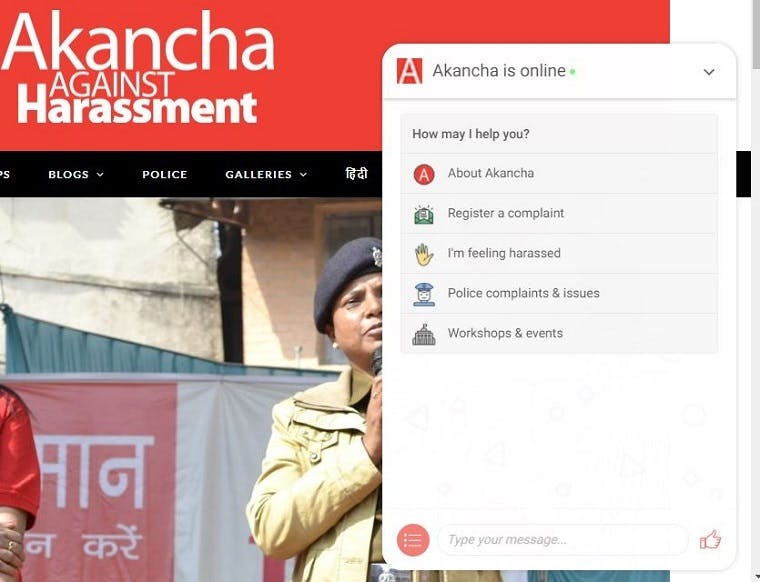
According to Times India, over 70% of women have admitted to being harassed online, however, at the time, there were only 11,592 registered harassment cases within the space of a year.
Although the AAH already provides information on how to access support, the bot acts as more of a direct link to help in real moments of need. What’s more, the use of emojis and gentle conversational language is likely to encourage users to see their complaint through.
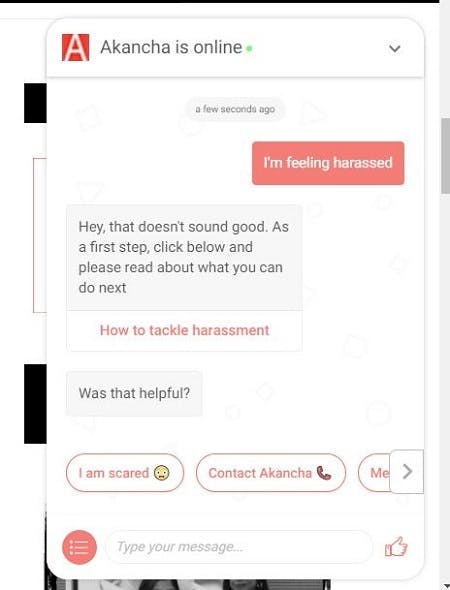
More on chatbots

Thanks for sharing these inspiring examples of how chatbots are being used in the charitable sector. It’s great to see how technology can be harnessed to make a difference in people’s lives. For those interested in developing their own chatbot for a charitable cause, it’s important to consider the costs involved. If you’re looking for a guide on chatbot development cost, I recommend checking out this comprehensive resource: